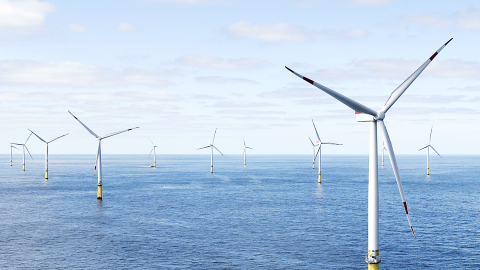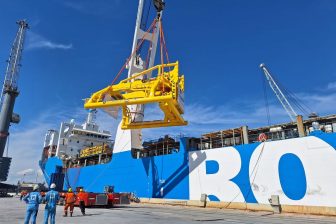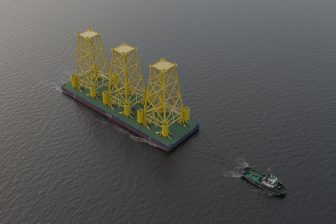
Western turbine manufacturers increase grip on wind market
Consolidation among wind turbine manufacturers is set to intensify. Wood Mackenzie expects the top five global turbine OEM’s will control three-quarters of the market by 2028. Western manufacturers will become even more dominant, although Chinese Goldwind will become the second-largest player next year.
Although Goldwind continues to climb the ranks, Western manufacturers are actually increasing their grip on the industry, research from Wood Mackenzie shows. The analysts expect the leading three western turbine manufacturers to increase their market share from 47% in 2019 to more than 60 by 2028.
That is especially remarkable considering ten of the top-15 wind turbine manufacturers in 2020 will be Chinese, capitalising on a domestic demand surge.
“Vestas, SGRE and GE will draw upon strategic relationships with major asset owners to execute large-scale projects while also investing in new products and technologies”, explains Shashi Barla, Wood Mackenzie Principal Analyst.
According to Barla, Vestas will remain the clear leader and see its market share elevated to an average of 20% over the next five years. SGRE follows the lead by becoming the second turbine manufacturer after Vestas to surpass 100GW of cumulative installed capacity, which the company will do by the end of 2019.
However, China’s leading turbine OEM Goldwind, accountable for 50% of all Chinese turbine exports, will surpass SGRE next year. “Goldwind’s leading position in China, combined with large projects in Australia and Canada, will see the company take the number two spot for the very first time in 2020”, says Barla.
Vestas, SGRE, GE and Goldwind will each install around 10GW in 2020 due to surge in US and China market activity.
Regional players
Smaller, regional players will face increasing pressures from the top manufacturers. Large regional players like Senvion and Suzlon are already struggling. Suzlon’s failed attempts to find a bailout partner have pushed the company into deeper trouble, while Senvion offloaded European assets including its blade manufacturing facility in Portugal to SGRE, while other business units are still scouting for investors. Wood Mackenzie notes.
“The appetite to invest and churn out new products and technologies to lower Levelised Cost of Energy (LCOE) compared to peers will aid in developing an improved commercial position”, Barla says.
Nevertheless, the outlook for regional players isn’t all bad. Nordex and Enercon are expected to strengthen their presence with increasing investments in new wind turbine technologies. Nordex is expected to install a record 5.5GW of average annual capacity in 2020 and 2021, which is an increase of 40% in comparison with 2019.
Offshore
While onshore-focused turbine manufacturers will compete in flat market which will grow at an average rate of 60GW, offshore players will see orders increase rapidly over the outlook period. The growth is driven by an increasing amount of bigger, European projects and the acceleration of markets in Asia.
‘SGRE continues to be the undisputed offshore market leader with more than 15GW of backlogged orders, but GE has made an enormous splash in this space with a combined 4.8GW of orders signed this year in the UK and the US’, Wood Mackenzie notes.
MHI Vestas, which solely focused on the offshore market, will elevate its global rank to be within the top ten OEMs by 2023 and number five globally by 2027-2028, representing the only pure-play offshore player within the top five. The company already secured contracts in seven countries totalling more than 7GW.
MingYang has become a rising star in the Chinese offshore sector, with more than 4.5GW of orders signed in the past year. “A closer relationship in Guangdong province, the largest offshore market in China, will sustain MingYang’s positioning in the long-term”, concludes Barla.
You just read one of our premium articles free of charge
Register now to keep reading premium articles.




